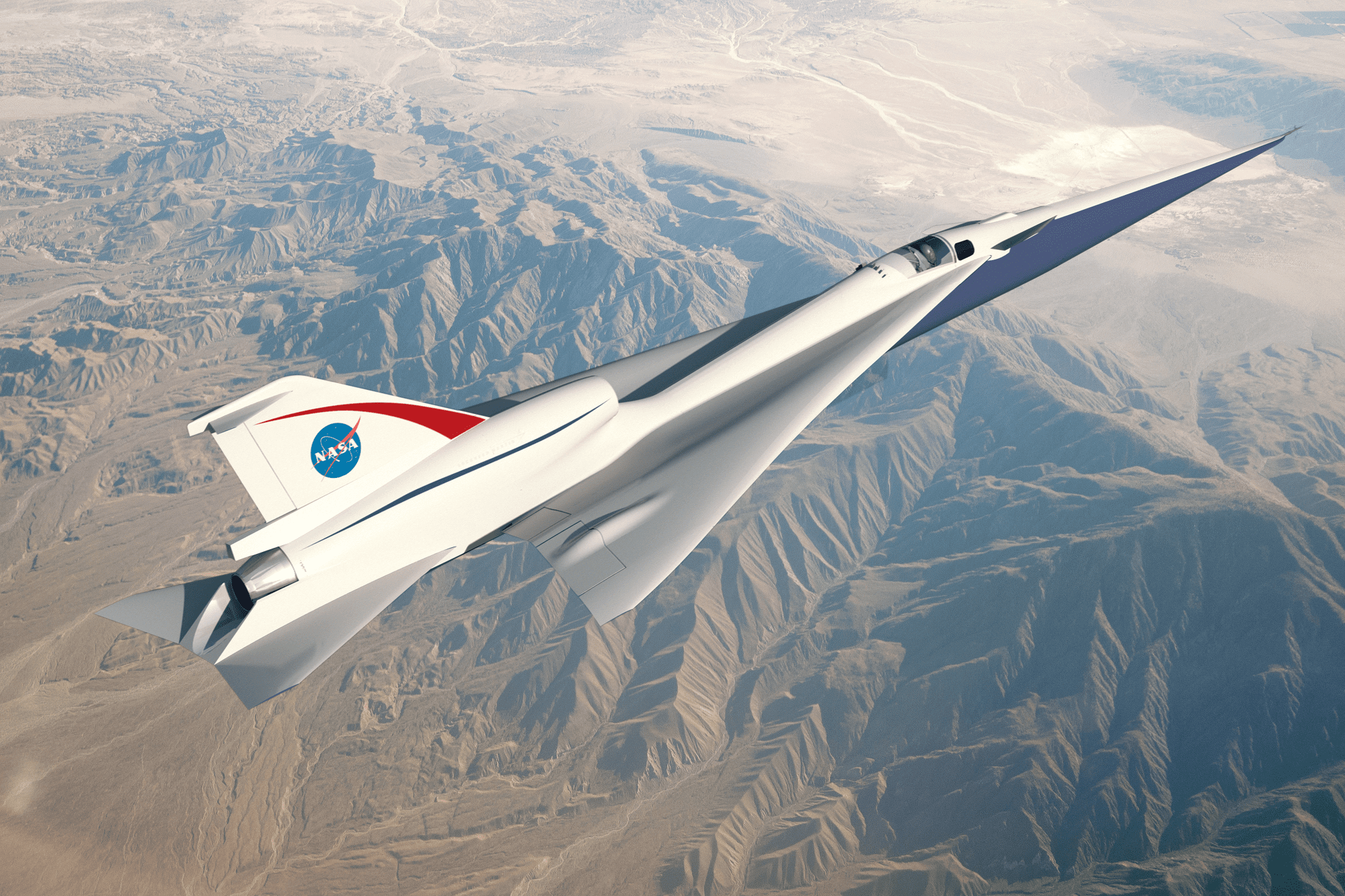America’s brightest aviation minds once designed, built and flew all kinds of experimental aircraft. Short wings, long wing, delta-shaped and forward swept, big tails and no tails, high speed and low speed, jet, rocket and even nuclear propulsion… they were the X-Planes, and NASA is about to restart another such era in aviation history again.
Last week, NASA’s efforts to make supersonic passenger travel over land a reality took a significant step forward, with the successful completion of a preliminary design review (PDR) for an experimental ‘Quiet Supersonic Transport’ (QueSST) aircraft design.
[youtube id=”LCfWkLfr1bY” width=”800″ height=”454″ position=”left”]
It’s the first design stage of NASA’s Low Boom Flight Demonstration (LBFD) experimental airplane, a new X-plane, and it aims to fix something the X-1 first introduced nearly 70 years ago – loud sonic booms.
Currently, supersonic passenger and commercial travel over land is not typically allowed, because of the sonic booms caused by traveling at Mach. They can be very disruptive to communities on the ground, so supersonic passenger jet travel is restricted to the oceans, such as transatlantic crossings of the Concorde once upon a time (Congress actually banned the Concorde from overland routes due to the booms).
So NASA partnered with Lockheed Martin in February 2016 for the QueSST preliminary design, and concluded on June 23, 2017 that it is capable of fulfilling the X-Plane’s objective, which is fly at supersonic speeds, but create a soft “thump” instead of the disruptive sonic boom.
Lockheed received about $20 million for the QueSST preliminary design work.
Recent research has shown it’s possible for a supersonic airplane to be shaped so that the shock waves formed when flying supersonic can generate a sonic boom so quiet the public would barely notice; if at all.

Credits: NASA
NASA compares it to the sounds of distant thunder, or of your neighbor forcefully shutting their car door outside while you are inside, or as the thump of a heartbeat.
A scale model QueSST completed testing in an 8-by 6-foot supersonic wind tunnel at NASA’s Glenn Research Center in Cleveland last month, and with the PDR now completed NASA will soon solicit proposals (later this year) to award a contract (early 2018) to build the piloted, single-engine, supersonic X-plane.
“The acquisition for the X-plane contract will be fully open and competitive, with the QueSST preliminary design data being made available to qualified bidders,” says the space agency.
“We know the concept is going to work, but now the best way to continue our research is to demonstrate the capability to the public with an X-plane,” said Peter Coen, NASA’s supersonic project manager.
NASA hopes data gathered from flying QueSST will help the Federal Aviation Administration (FAA) and its international counterparts establish noise-related regulations to make commercial supersonic airliners over land possible across the country.
The first LBFD X-Plane flight tests could occur as soon as 2021.
[youtube id=”M7pdza9ctRw” width=”800″ height=”454″ position=”left”]
NASA is actually preparing to fly several experimental aircraft, as part of the agency’s “New Aviation Horizons” initiative introduced in the agency’s Fiscal Year 2017 budget to design, build and fly a series of X-planes during the next 10 years as a means to accelerate the adoption of advanced green aviation technologies by industry.
In addition to developing quiet supersonic travel, NASA is also aiming to make airliners able to burn half the fuel and generate 75 percent less pollution during each flight than they do now.
“If we can build some of these X-planes and demonstrate some of these technologies, we expect that will make it much easier and faster for U.S. industry to pick them up and roll them out into the marketplace” said Ed Waggoner, NASA’s Integrated Aviation Systems Program director.
– Follow Mike Killian on Instagram and Facebook, @MikeKillianPhotography
.
